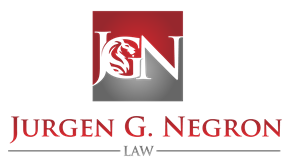

The invoice method classification determineswhether the invoice amount is calculated based on rates, amounts,or progress. Let’s assume for the sake of argument that you don’t have time to manually track every individual hour worked, material purchased and equipment rented. If all your invoices are consistent in format, it’s a lot Food Truck Accounting easier to avoid errors and easily compare information from multiple billing periods.


Use The Right Construction Billing Methods
Since clients have clear visibility into the overall project expense from the start, this method eliminates budgeting surprises later on. This can seem like tons of calculations and constant back-and-forth paperwork that will stress you and your client at the end. Indeed, it’s a system that requires detailed record-keeping and clear communication. If there is any inconsistency in regards to the sub or supplier’s company information, it should be confirmed.
Lump Sum Completion Percentage (AIA-Style)
This method ensures a more transparent financial arrangement where both parties understand the maximum financial commitment from the outset. In summary, retainage billing is widely used in construction and other project-based industries to ensure quality and fulfillment of contractual obligations. It helps manage risks for the client while encouraging contractors to adhere strictly to project specifications. As you can see, construction billing methods come in many different shapes and sizes; each method has pros and cons that will work better for specific use cases.
Construction billing made easy


Unit price contracts divide work into fixed-cost units, where contractors bill for each unit separately. Similar to cost-plus contracts, the unit price includes labor, materials, equipment, overhead, and a markup for profit. Each billing method in the construction industry has its advantages, and the choice of method will depend on the project’s scope, the client’s preferences, and the contractor’s financial management strategy. AIA progress billing helps to ensure clarity and reduces errors as contractors receive their payments as the project progresses, which can improve cash flow. Cost-plus billing, in a nutshell, is all about builders providing their clients with detailed reports of all project expenses as they arise. This could include everything from the cost of ledger account bricks to the wages of skilled workers.
AIA Progress Billing
Arrears billing in construction is the process of billing at the end of a project. Payment is sent out as a lump sum once all stakeholders have signed off and approved the final product. The billing method of any construction contract is a pivotal detail for both parties. Each method carries different risks and advantages for either side and should be consciously considered in negotiations. Project duration and stakeholders should also be considered in every contract when selecting a billing method. With the support of the right technology, construction billing does not have to be tedious and time-consuming.
Job costing
- In a nutshell, progress payments are partial payments made during different stages of a project, based on the schedules included in the project proposal.
- The difference here is that clients are charged when pre-agreed milestones (set at the start of the project) are complete.
- Contractors will have to pay out of pocket for materials and labor and count on their clients to pay fully and on time.
- This comprehensive work list represents the entire construction project and the entire contract price, from beginning to end.
Particularly for large building information modeling (BIM) files, this can get sticky. Keeping up with billing throughout the project cycle will avoid chasing down documentation from long-finished tasks and cover all the bases for backup documentation. Learn how a design-build GC dramatically cut billing time and improved invoicing accuracy. Stripe is another payment gateway very similar to Square, except it is more focused on tech-enabled consulting firms that are more online and virtual compared to in-person. Learning new software systems can be a bit overwhelming for teams, especially if they know another system inside and out. Make sure that you leave plenty of time to schedule comprehensive training sessions for all team members, where you can address any questions or concerns.
- You should then prepare a well-thought-out budget that accounts for all costs that you expect to incur throughout the project.
- These tools often include features for job costing, financial statements, progress billing, and WIP reporting.
- But the importance of percentage completion, costs of services or outstanding balance very much depends on how many instalments you’ll be paid in and how they’re calculated.
- It is also necessary for construction accounting and preparing financial statements.Now that you know what a billing method is, let’s look at 7 of the most popular billing methods used in this industry.
- Other information may be required depending on the project and your billing procedures.
- Once a milestone is reached, the contractor submits an invoice for a percentage of the total project cost.
Costs plus percentage/fee


Disputes can arise over the percentage of work completed, requiring detailed and accurate documentation to support every invoice issued. The complexity and meticulous nature of AIA billing mean that errors can have significant implications, potentially leading to disputes or compliance issues. Furthermore, the cost of using official AIA forms and potentially customizing them can add to project expenses, impacting overall profitability. In summary, Time and Materials billing is an excellent choice for projects that are too complex or undefined to estimate accurately at the outset. It aligns the cost with the actual work done, ensuring fairness for both contractors and clients, albeit with a need for careful management and transparent documentation.
Progress Billing
Guaranteed maximum price billing is when the contractor agrees to complete the project for a fixed price but with a cap on the cost. This method offers the client more control over the project’s cost, and the contractor is construction billing methods incentivized to keep costs under control. To ensure accurate billing and maintain finances, the construction company must track all expenses and bill the client accordingly. Choosing the right billing method is essential to ensure accurate billing, reduce disputes, and maintain profitability. Cost-plus billing is a construction billing method where the contractor gets reimbursed for all project expenses such as materials, labor, equipment and subcontractors fees.


Firstly, they are fundamental to maintaining cash flow—vital for the health and operation of any construction business. Timely and precise invoicing ensures that funds are available for ongoing expenses, including payroll, materials, and equipment rentals. If project costs exceed the guaranteed maximum price, the contractor is responsible for covering the excess. To avoid unexpected overruns, precise and comprehensive project scoping and cost estimation must be performed before submitting a bid.
